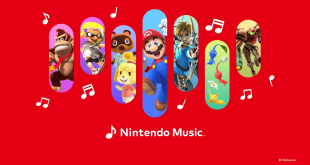Earlier today Microsoft had their second large media event in just a few todays. Today the limelight was on the Windows Phone platform and Windows Phone 8 was unveiled. It brings with it several improvements and promises that will be sure to help out the struggling mobile operating system.
So what's new? Here we go:
- There is a new start screen; in current versions of Windows Phone there was only the option to place large tiles. There will now be the option to add double size, medium or tiny tiles. This allows for more shortcuts to be displayed on screen.
- Multiple resolution (HD) support. So far devices have been restricted to a 480 x 800 resolution, even if they have 4.7 inch displays. Two new resolutions are supported and they are 1280 x 720 and 1280 x 768.
- Every Windows Phone to date has been restrained by single core Qualcomm processors, this is no more. Multi-core support is here and the top of the line Windows Phone 8 devices will be powered by the Snapdragon S4 MSM8960 Plus beast later this year.
- There is now support for MicroSD expansion. In past phones many phones had MicroSD slots; it's just they were hidden away behind warranty void stickers and held the operating system itself. This should go a long way to please media enthusiasts – we just hope Zune will be an option rather than a necessity.
- Windows Phone 8 will share the Windows NT kernel with Windows 8. This results in relatively quick app porting from one platform to the other.
- Internet Explorer 10 will be present and the Phone version will be closely based off the desktop version. According to Microsoft, Javascript and HTML5 performance has been increased by 400% and 200% respectively.
- Every Windows Phone 8 device will have access to Nokia Maps, dropping Bing maps in the process. Offline map support and turn-by-turn navigation will be present thanks to the system powered by NAVTEQ.
- Microsoft is also planning to incorporate a voice command system into the developer's SDK. Developers will be able to program specific commands for your interaction with the apps.
- Better (but still poor) multitasking; it's not quite Android like but VoIP apps such as Skype will now be allowed to run in the background, in addition to music.
- Camera now has panorama and burst capture modes.
- NFC chips will be present in new devices.
- A Wallet hub will offer integration with online banking and even library cards. NFC payments will also be supported.
- Software updates will now be available over-the-air (no more waiting around on Zune).
- Support cycles of all devices will be at least 18 months.
- Microsoft has partnered with Nokia, Samsung, HTC and Huawei to manufacture Windows Phone 8 devices.
- Deep Skype integration is featured and Microsoft has left an API open for other VOIP applications such as Viber to achieve the same feat. This also means that a Skype call will look identical to a traditional call.
- Will be available on devices this fall.
That's about all we learnt today and we're fairly sure this isn't the end list. What is disappointing to the lack of an improved notification system – right now it appears to be very iOS 4-like.
KitGuru says: The software looks like it has what it takes – but will the people agree to make it a truly competitive mobile platform?
 KitGuru KitGuru.net – Tech News | Hardware News | Hardware Reviews | IOS | Mobile | Gaming | Graphics Cards
KitGuru KitGuru.net – Tech News | Hardware News | Hardware Reviews | IOS | Mobile | Gaming | Graphics Cards




3 comments
Pingback: For your viewing pleasure: Windows Phone Summit presentation | KitGuru
Pingback: Windows Phone 8: What We Missed Yesterday | KitGuru
Pingback: Specifications leak for three HTC Windows Phone 8 devices | KitGuru